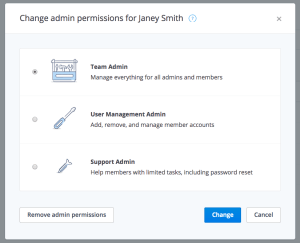Dropbox announced several updates today designed to appeal to larger enterprise customers and make them feel more comfortable using Dropbox for Business.
Dropbox faces a huge challenge with enterprise customers. Sure, it cites some big numbers in terms of current users, claiming 100,000 Dropbox for Business users including high profile clients like MIT and Hard Rock Cafe. Yet it’s also feeling heat from competitors like Box and Egnyte who aimed at the enterprise early. Dropbox came to the game much later and has been building a business tool incrementally that’s increasingly appealing to large enterprise customers.
What’s more, it lost the guy who helped build the business tool Ilya Fushman a couple of weeks ago when he left to join Index Ventures. Regardless, the show must go on and work has continued as the torch was passed to Rob Baesman, head of product for Dropbox for Business, who had been Fushman’s chief lieutenant for about a year.
Today, the company announced several new features.
To answer some of those security concerns from larger organizations, Dropbox is providing a way to force users to add two-factor identification to access their files. If a user has failed to do this, they will be guided through the process of signing up automatically.
It also built a tool that creates three levels of administration. It’s been designed to line up with standard ways large companies tend to organize administrative activities, Baesman said.

The company also has made it easier to maintain sharing relationships with existing folders, something that was apparently a pain point for customers prior to offering this feature. This was particularly important for migration, data loss prevention (DLP) and digital rights management (DRM) vendors who plug into Dropbox for Business.
The Shared Folder API makes it simpler to interact directly with the folder in an automated fashion. In the case of DLP, this means if a person is violating a particular policy, such as sharing Social Security numbers, the API makes it easier to turn off sharing associated with the questionable file. A third-party tool can access the folder and make sure the file doesn’t move any further and cause a problem.
Finally, it has released a connector for Active Directory, which should also help ease deployment in large organizations. Customers had been accessing Active Directory through an API, but this provides a way to link more directly to the popular directory service.
None of these alone is an earth-shattering new feature, but it is part of an overall evolution for Dropbox for Business as it works to make it easier to use inside large settings. Dropbox still has its work cut out for it, but with each passing iteration, it is making the tool more appealing to business by providing the types of tools and APIs that large organizations are going to expect.
